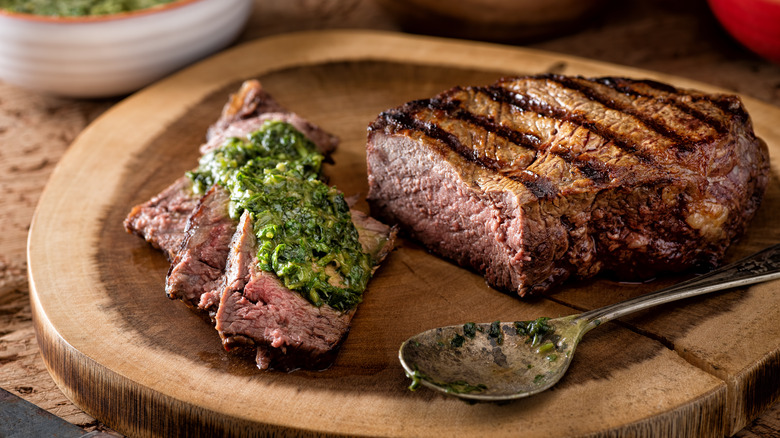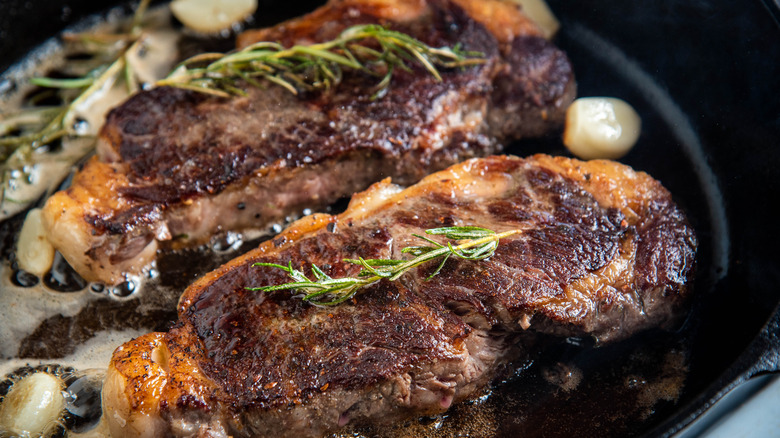If Your Steak Has Grill Marks, You May Be Missing Out On Flavor
There's a reason almost every photographed steak features pronounced grill marks, supposedly indicating a sizzled and smoked work of culinary art. It could indeed be mouthwateringly delicious. But, as with most things barbecue, there's more to the story than meets the plate.
Most grill-meisters agree that technique is everything, second only to choosing a premium cut of meat. For visual appeal, those grill marks matter, a lot. But it's possible they're detracting from the ultimate flavor potential of your steak. The marks indicate crusty browning from the high heat of your grill, which creates an explosion of flavor compounds tickling your tastebuds in glorious ways. But what about other parts of the steak exterior? It's quite possible that, by focusing on the glorified grill lines and crosshatches, you're taking loads of tasty potential off the table.
Science almost always plays a role in the marriage of heat, meat, and technique. So, here's a look at how that plays out on your grill, stovetop, or oven-based grill pan, and ultimately, on your palette.
Yes, it's that Maillard reaction
If you spend much time perusing cookbooks, food blogs, or culinary-themed social media posts, you've likely heard of the Maillard reaction. Since it can affect your steak, particularly regarding grill marks, it's worth a quick refresher on the science behind the heat-based phenomenon.
Simply put, the Maillard reaction is browning, which generally occurs when food gets exposed to heats above 285 degrees Fahrenheit. It happens when bread becomes toast, milk and sugar turn into caramel, roasted coffee beans turn brown, and, yes, when meat gets a charred, crispy, or crunchy brown coating. But it's not the color change that matters the most; It's the flavor depth and texture enhancement that occurs during chemical reactions as the food browns.
Grill marks alone on steaks, chicken, and other meats do indeed bring out those tasty flavor compounds, but they stop short by only affecting the limited number of visible lines and sear marks. What you really want is an all-over browning of the entire cut of meat, thereby maximizing flavor and crust potential.
The self-described "barbeque whisperer" and "culinary mythbuster," Meathead Goldwyn, best-selling cookbook author and creator of AmazingRibs.com, tells the Chicago Tribune that grill marks on meat mean lost potential. He also dispels another grilling myth about not flipping meat: Constant flipping in fact maximizes the Maillard reaction, causing a flavor riot on your grill and in your mouth. You'll also end up with an evenly cooked steak. What's not to love?

